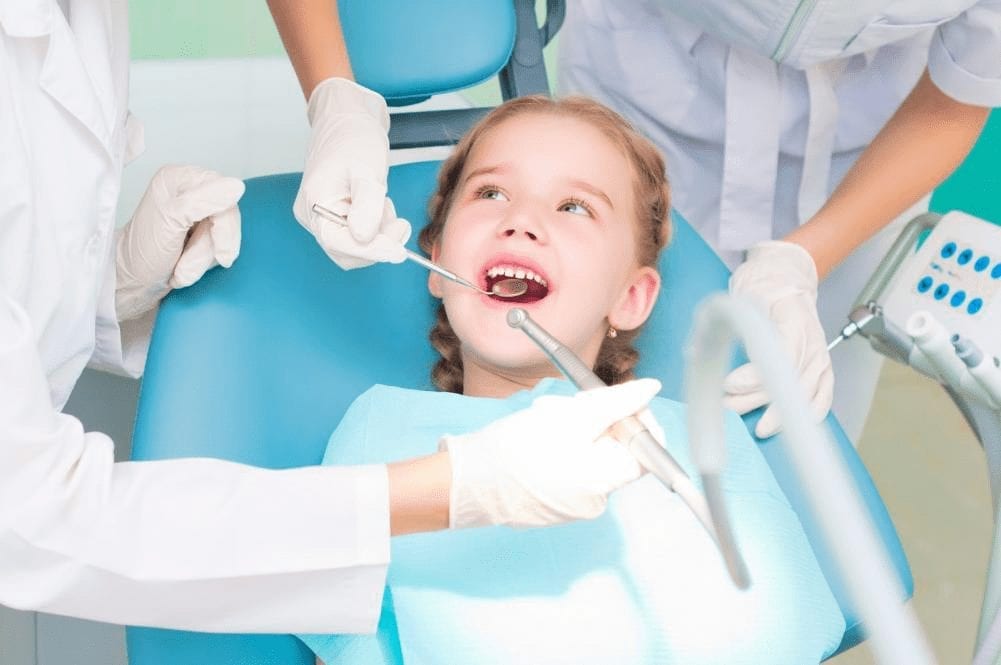Taking a child with SPD (Sensory Processing Disorders) to the dentist is not easy. But it isn’t impossible either.
Bright lights, strange noises, vibrations and new people? Visiting the dentist is nothing less than sensory overload. This is often a cause of concern for parents who wish to take their child to the dentist. So they usually opt out of the appointment for as long as they can.
But a visit to the dentist is often inevitable for most families. So it’s important for you to come prepared to the clinic rather than scared.
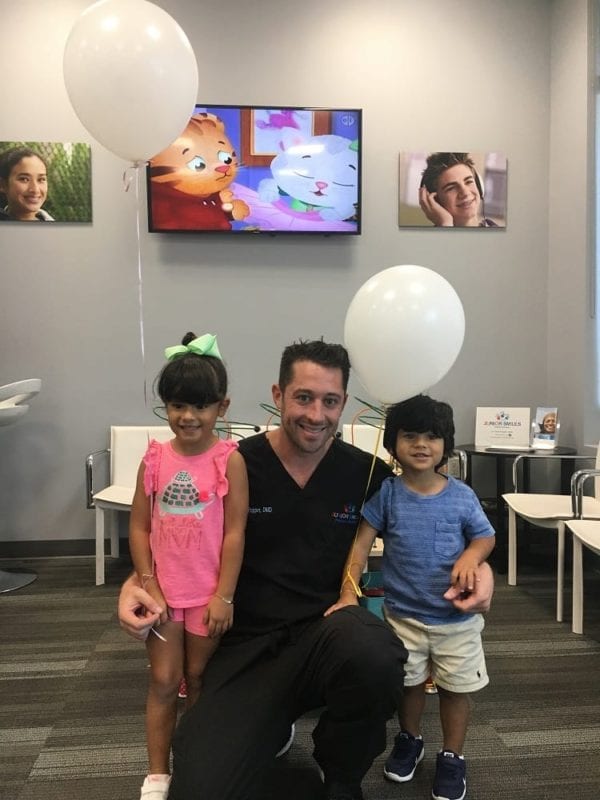
Here are some things that you can take to overcome sensory issues at the dentist:
1. Do Your Homework
Pediatric practitioners always book an introductory first visit before the actual appointment for all kids. This allows the young ones to familiarize themselves to the new setting and people there. But even the meet and greet visit might create issues for a child who suffers from SPD.
So, it’s essential for you to mentally prepare them for the dental appointment.
Here’s what you can do to help them:
- Use picture books and video to teach them about the dentist.
- Engage them with interesting facts and tell them how going to the dentist can be fun.
- Introduce them to an electric toothbrush (affiliate link) prior to the appointment. This will help them get used to the vibrations and stimulations felt during the dental checkup.
2. Right on Cue
Communication is a key factor in the examination room for guiding young patients. However, this proves to be a tad difficult for children with SPD. That’s because many of them can’t understand social cues.
Therefore, it’s helpful if one of the parents stays in the examination room. You can act as a medium between your child and the dentist. From mimicking the dentist’s next move to warning the dentist about some foreseeable triggers? There’s a lot that you can do inside the room.
Plus, children usually feel more comfortable and secure with their parent close by. It assures them that this is indeed a safe place and they won’t be harmed.
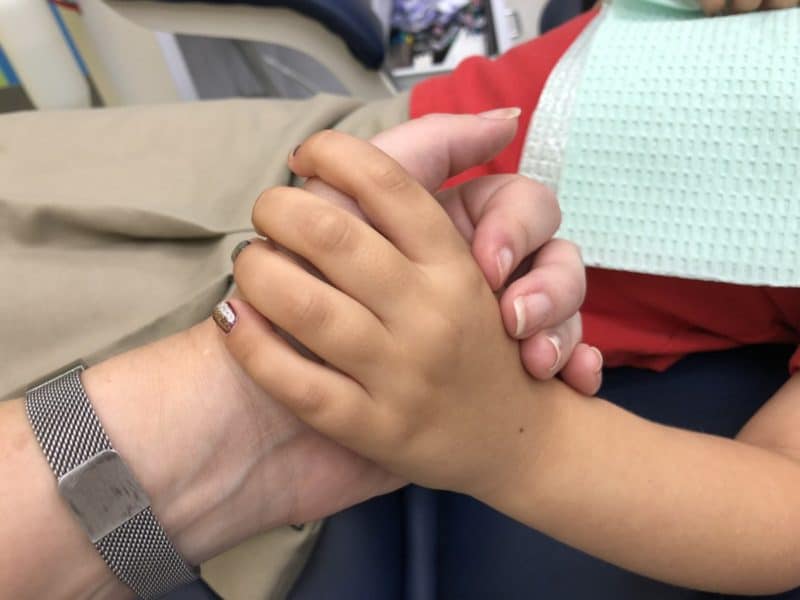
3. Diversion Tactics
Does your child get scared of loud noises? Do they get agitated by bright lights?
This study shows that adapting the dental environment is an effective strategy to counter the sensory discomfort. Pediatric dentists try their best to accommodate your child’s needs. Yet, things like the bright light inside the room and noisy sounds from the waiting area are unavoidable.
Here are a few diversion tactics to keep them distracted during the appointment:
- Make them wear sunglasses and hats to reduce the exposure to lights.
- Put some noise cancelling headphones on them to block the sounds.
- Let them play with fidget toys so they remain occupied during the appointment.
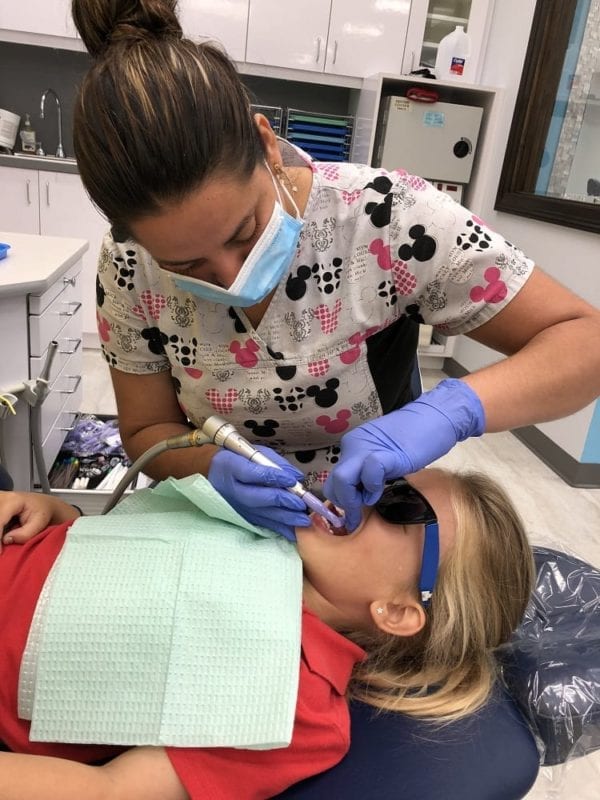
The basic idea is to divert their mind away from all those sensations and stimulations. This allows them to remain calm and be more tolerable in the situation.
Let’s Sum It Up…
In a nutshell, preparation, communication and distraction help overcome sensory issues at the dentist. The triple-action formula makes the dentist visits feel safer and easier for your child. With time, it’ll help them get accustomed to routine checkups.
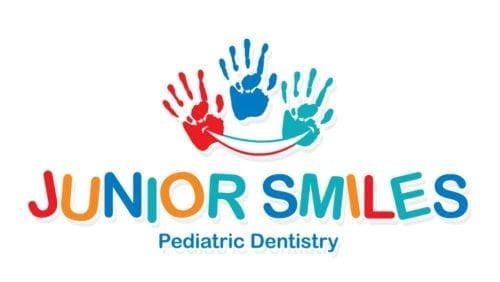
Looking for a pediatric dentistry for your child? Dial 561-210-7788 to book an appointment with Dr. Drew Popper at Junior Smiles. They do their best to make your child’s visit to the dentist as comfortable as possible.
Sponsored: This blog post was sponsored by Junior Smiles. All opinions expressed in this blog post are my own and not influenced in any way by the sponsor. Any statistic, quote or other representation about a product or service should be verified with provider and please refer to this site’s Disclosure for more information. I have been compensated, but that does not impact my views or opinions.

